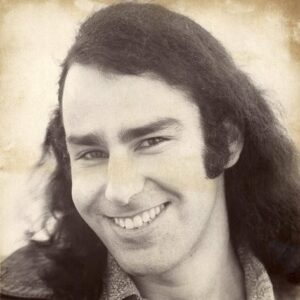KRSI-FM – 1972 – 1973
During the Identity Crisis – Was it KRSI — or KQRSI?
After just six months of part-time announcing on KQRS in 1972, Lance (a.k.a. “Tac”) Hammer offered me a full-time job at KRSI. Though I was flattered, I really didn’t want it. But even my KQ boss, Shel Danielson (a.k.a. “Alan Stone”), thought I should take the offer, saying it was a good career opportunity for me.
Resigning KQRS was the most difficult decision of my life (up to that point). I agonized over it! After all, KQ was the very best station I had ever heard in the entire country. I’d gone to four years of college listening to it. I’d emulated its announcing style and musical format on my college radio station (bringing in my own albums and breaking format rules in doing so). And, in my own mind, I was already best friends with all of the announcers at KQ, before I even met them in the flesh. So it was torturous making that decision.
On the positive side, however, going full-time on KRSI, I really started to grow professionally very quickly. I also got to work with two of my closest friends, John Peterson (a.k.a. “John Pete,” who’d left KQ himself for a better opportunity at KRSI) and Susan Bradley (who I’d known and dated in college). And, because of them (plus the decision to hire me), it looked like KRSI was really going to take off and become a relevant player in progressive radio. Even serious KQRS listeners were beginning to change the channel.
During that period, the two stations were true competitors, keeping programming secrets from each other. But the other reality was that most of us were really close friends outside of work. Sometimes I referred to us as “KQRSI.” It was sometimes incestuous, and we were having a great time socializing together.
On the down side, there was a hesitation at KRSI to take the full leap into risky, creative radio. Tac (no one called him Lance), who came from Top-40 radio, would take two steps forward in the progressive direction, then three steps back into his comfort zone. The record library paled in comparison to KQ’s, and Tac’s approved playlist was horribly restrictive. And, staff wise, we had half the day sounding one way, with booming Top-40 jocks, and half the day sounding laid back and conversational. Who were we, really? Some hybrid between KDWB and KQRS? It was hard to say.
Out of frustration, one by one, the progressive team (those of us who considered ourselves to be “radio announcers,” not “DJs”) left KRSI. John was hired back at KQ. Then Susan Bradley followed him, shortly thereafter. I tried to get hired back, myself, but I’d burned my bridges with Dick Poe, the general manager. So I simply quit (and went off to travel through Asia by bus for half a year).
Except for four horrible days on a radio station that claimed to be progressive in Lincoln, NE, (plus four years volunteering on KFAI, “Fresh Air Radio”), I never went back into radio. I had gotten spoiled. I’d worked on the very best station there was, and everything else paled in comparison.
I was a purist and couldn’t deal with how commercial radio had become. But, like most of us from that period in radio history, I’d still love the opportunity to do truly progressive radio again somewhere. How fabulous it would be to have the freedom to play rock, jazz, blues, folk, country, East Indian and comedy, all within the same show, like we did back then.
Below you will find two actual air-checks from KRSI. One is abut five-and-a-half minutes and the other is just over four minutes. Plus, there is one bonus recording, an audition tape, produced and recorded by Richard E. Nelson, my friend, the production wizard from KQRS. (I never sounded that “tight” and “produced” in real life.) The recordings were all originally recorded on monaural tape. Years later, they were converted to CD, and then, later still, to .mp3.

